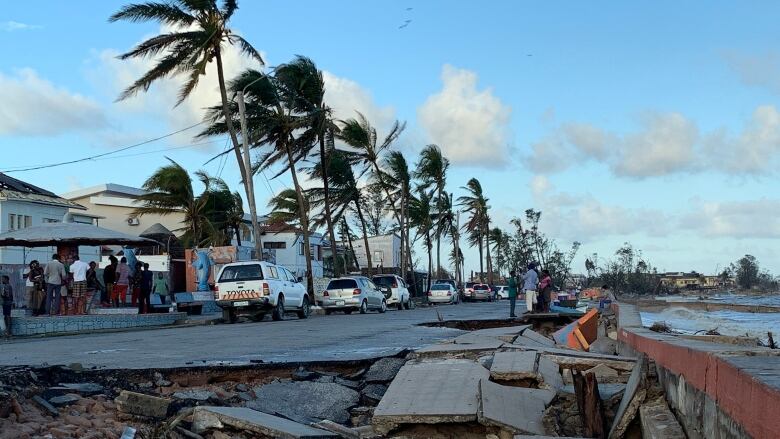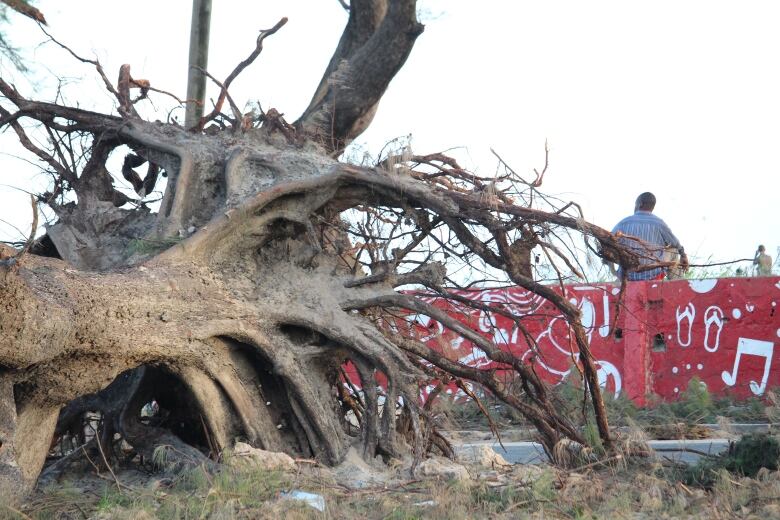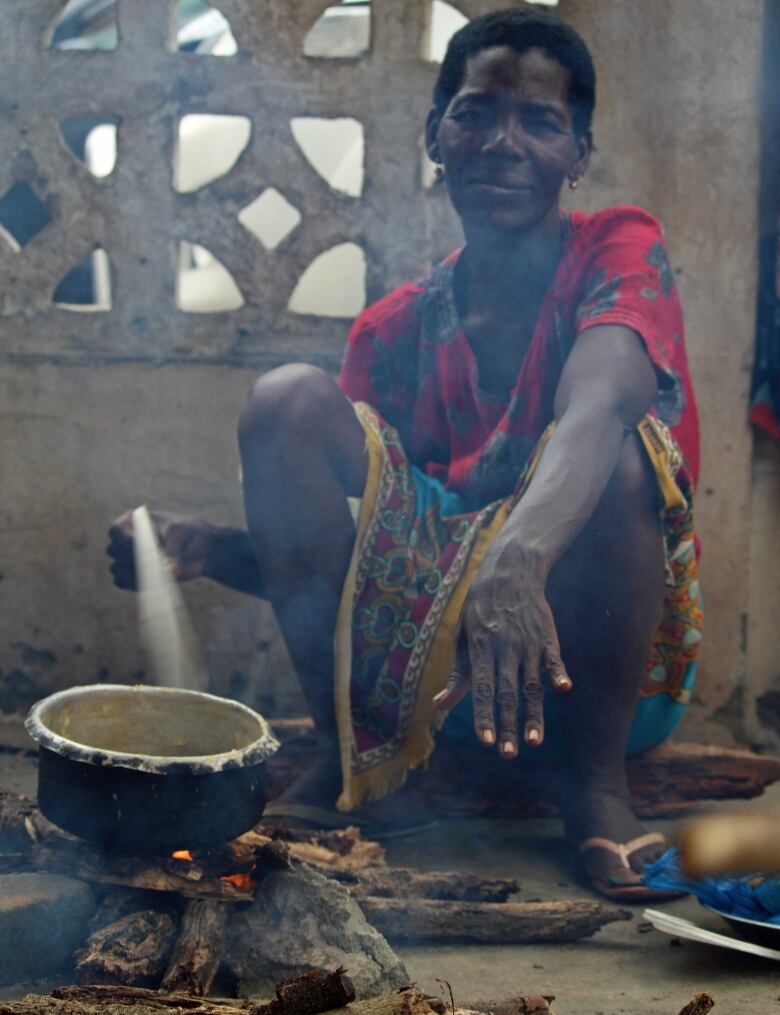Extraordinary destruction and flooding in Mozambique point to unprecedented storm
In Beira, even the morgue's roof was blown off, replaced temporarily with a blue tarpaulin

In a small room at the Beira morgue, just eight people and a priest walk around a coffin with a young woman's body, but the sound of their grief carries far.
Christine was 32 and disabled, without the use of her legs. Her heartbroken sister, Maria Vasco, explained that when she heard the cyclone was coming, Christine left her own little house and found shelter in another, believing it would offer better protection from the ravages of the storm.
It didn't. And just like that she was gone. The loss hit her family especially hard, because it was so sudden.
Tropical Cyclone Idai ravaged Mozambique, Zimbabwe and Malawi, peaking on March 11 and killing more than 760 people in the three countries. UN Secretary-General Antonio Guterres has called it "one of the worst weather-related catastrophes in the history of Africa."

Beira is still in mourning, still bearing the scars of sudden catastrophe. As the city tries to get back on its feet, its people are still trying to make sense of a singular storm that defied the rules of any they have ever known.
In a local paper, a former Mozambique first lady was quoted saying that Beira will "go down in history as having been the first city to be completely devastated by climate change."
While there is still an ongoing debate, many international experts believe climate change is the culprit. The extraordinary destruction and flooding clearly points to unprecedented factors.

From above, the outlines of the waterlogged city have been smudged by the winds and an angry sea. As you fly farther into the flood zone, the water goes on as far as the eye can see, submerging everything. It's believed to have covered an area as large as 2,100 square kilometres.
Within the city of Beira, the roiling sea took giant mouthfuls of the coastal road, and the wind uprooted mighty trees as if they were saplings. They now lie leafless by the side of the road in the dozens, bearing their roots clear out of the ground.

Even the morgue's roof was blown off, replaced temporarily with a blue tarpaulin held down by rope.
And houses thought to be secure came tumbling down.
"On that day, the house fell in on her," said Vasco as her sister's coffin was carried to a small truck en route to the cemetery. Christine was taken to hospital alive but then died of her injuries.
"For the family it's very difficult."

It seems nothing was immune. The large hangar at the airport has lost large tracts of roofing. The imposing Sacred Heart church of Macuti was cracked open by the wind, its roof blown clear and down to the ground, along with two of its walls, a fallen nearby tree is now leaning into the rubble.
A statue of Mary remains on one of the intact walls. The pews are visible from the courtyard.
Felipe Speng and his sister, who live nearby, walked around the site to assess the breathtaking damage. Felipe has been coming to the church for seven years.

"It sounded like a big house coming down," he said, describing the church's destruction that night. "Everyone was scared."
"We have lost our church, but we are still alive. It's time to say thanks to God."
Look past the mangled roofs and the sea-ravaged roads and you can see Beira is trying to pick itself up. Traffic is returning. School kids in uniform walk to class. Electricity is steadily being restored.

Small crews of street cleaners, women and men, some in hard hats and rubber boots, are manually scraping up the storm-broken branches and pitching them into garbage trucks.
They are small steps. Since the storm battered the country's infrastructure, telecommunication is still extremely difficult. Prices of goods have skyrocketed. Thousands now make their homes in schools and churches. Some 2,800 schools are believed to have been destroyed.

Then there is the destruction of countless of ordinary homes, displacing thousands of people.
"I have lost all my books, my bag, all things," student Daniel Sarafin told CBC.
"I was supposed to go back tomorrow, but I don't know how I'll continue studying, because I've lost everything."
As a remedy, he moved back to his village near Gorongosa National Park.
Others haven't been so lucky.
A primary school in a central Beira district has been transformed into shelter for those who lost their homes in the storm. Living there means living in close quarters with some 2,100 people.

Makeshift kitchen
What was once the courtyard is now full of women and children sheltering in the shade.
The far corner has been turned into a makeshift kitchen, where tree branches felled by the storm are being used as fuel. Classrooms are now bedrooms for way too many people.

School desks are workstations where women pick through the beans they plan to cook for dinner.
Two small children play in a puddle of dirty water.
"I'm here because I have nowhere else to go," says Maria Jamie Jose, who escaped her destroyed home at the height of the cyclone.
"But to live like this, it's not so good."













_(720p).jpg)


 OFFICIAL HD MUSIC VIDEO.jpg)
.jpg)



























































































